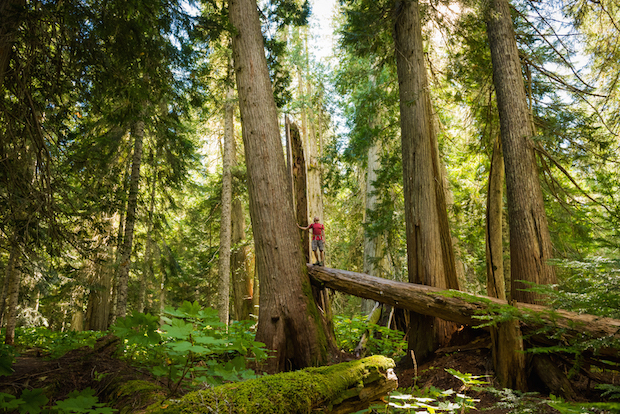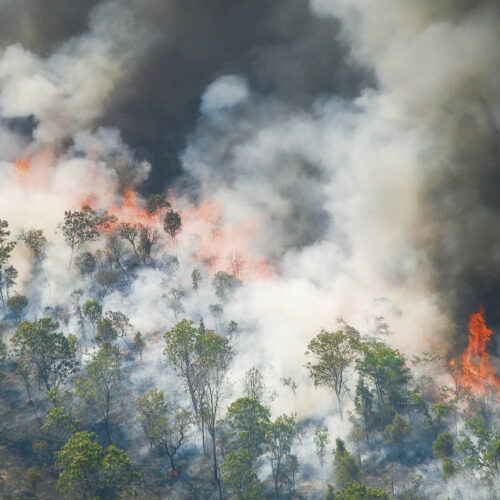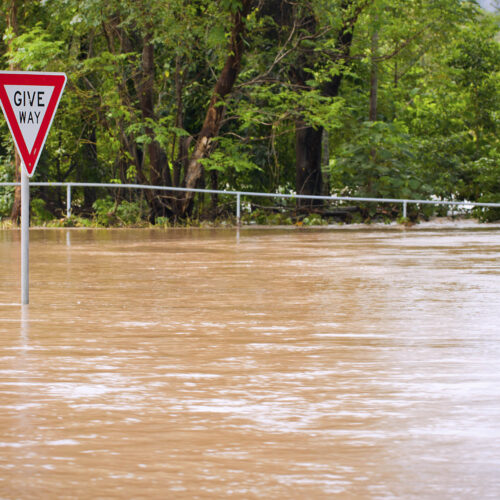Plan A – Saving earth
2018-01-23T23:36:22+11:00
How do we save Earth’s life-support systems and ourselves in the process? Dr Reese Halter reports on the action needed and our progress to date.
You don’t have to be a climate scientist to see that Mother Nature is sending us a clear SOS: raging bushfires, deadly floods, mass coral bleachings and unprecedented heatwaves (see ‘Earth’s SOS’, at bottom). But thankfully, for those of us who have dedicated our lives to reading the signs, there is promising news. From a decade ago where scientists and activists were still fighting for saving Earth and to convince people of the truth of climate change, many nations are now fast-tracking the solutions.
Congratulations to Germany for its commitment to cut carbon emissions by 95 per cent by midcentury. Denmark has a very aggressive program to reduce its carbon emissions
by 40 per cent over the next 24 months. Globally, my atmospheric science colleagues including Dr James Hansen*, the Dean of climate science at Colombia University (USA), unanimously agree that fossil fuel must be phased out by 2050 when Earth will be supporting an estimated (and staggering) 9.7 billion people.
But instead of fragmented actions, comprehensive plans are being drawn up to tackle climate change globally. Stanford University’s professor Marc Jacobsen and his team have devised The Solutions Project – a roadmap for 139 countries to reach 100 per cent renewable energies as soon as possible. It entails mobilising all sectors of society, from governments to the media, business sector, labour force, religious groups and the public at large. It’s a successful blueprint, in the vein of President Franklin Delano Roosevelt’s plan that mobilised America for WWII. This time round, all nations are required to work together.
Ethical Investment pioneer and environmentalist, Paul Hawken’s latest book Drawdown is also a comprehensive blueprint to combat climate instability. A team of 200 scientists assembled it. The goal: attain a zero-combustion economy as soon as possible. In addition to presenting and ranking solutions with net zero-dollar savings, it also delves into today’s social solutions. We need optimism and Drawdown provides it and a detailed playbook to get there.
There are also a number of other excellent blueprints that skilled scientists and engineers have formulated. Al Gore late last year released An Inconvenient Sequel: Truth to Power, in which he travels the planet demonstrating the tools we now have to heal the planet (after his Inconvenient Truth book and documentary did much to convince the world of the reality of global warming).
The immediate question, however, is how will society pay for the breathtaking transition to a zero-combustion economy? Easily. For a start, we can redirect the current $5.3 trillion annual subsidies to fossil fuels to renewable energies. Market forces are already pushing money into renewables and away from fossil fuels in a stunning turnaround from less than a decade ago.
To save Earth’s life-support systems here are my top priority areas needing urgent action (and why), and a report card rating on where we are at.
Report card
A – Better than expected progress and great initiatives happening now
B – Good progress but still many nations going backwards
C – Poor progress with some glimmers of hope
F – Things are getting worse, not better. Fail!
ACTION
Protect all ancient forests
Trees are stellar carbon-dioxide warehouses – they’re the lungs of the land. For every tonne of wood, 1.5 tonnes of atmospheric carbon dioxide is removed and one tonne of oxygen released. Workers from the University of Hamburg recently reported the importance of ancient trees.
In Suriname, on the northeastern Atlantic coast of South America, the ancient ones accumulate 70 per cent of all wood, or carbon, during the last half of their lives. Some tree species amass 40 per cent of all wood in the last quarter
of their long lives. Ancient forests are the best climate stabilisers we have. They still cover 15 per cent of the Earth’s surface. We have enough plantation wood and industries cropping up on all continents now to repurpose old timbers.
We need a global moratorium on logging all remaining ancient trees and forests. These daily cloud-making biological communities reflect massive amounts of solar radiation back to space. They are vital for keeping the planet cool.
The UN Environment Program in conjunction with big environmental groups has mapped all the remaining ancient forests. It’s now a matter of a newly proposed resolution from the UN to be ratified thereby protecting all ancient forests from chainsaws.
REPORT CARD
Land clearing is accelerating from Brazil to Canada and from Russia to Australia and many countries in between. Tree poaching is an epidemic in the Amazon, Indonesia, Madagascar, Cambodia, California and Washington State.
Congratulations though to India, which has committed $6 billion to reforest 12 per cent of its nation, and in doing so creating climate-stabilising forests of the future. On 3 July 2017, India planted 66 million saplings along the Narmada River in the state of Madhya Pradesh.
GRADE: F
ACTION
Protecting peatlands
Peatlands are crucial habitat for many creatures including the endangered Indonesian orangutans. Peatlands are located from the tropics to the North Pole. Peatlands are intriguing – thick, mucky, dark and waterlogged with up to 22 metres of ancient decomposing plant matter in the absence of oxygen. Eventually, peat becomes coal. Peatlands occupy three per cent of Earth’s land area. They hold an astounding amount of carbon, perhaps as much as 600 gigatons, or twice that held by the ancient forests.
In order to function, peatlands depend upon specially adapted plants and trees to prevent the stored carbon from escaping into an over-heated atmosphere.
REPORT CARD
Peatlands, like the ancient forests, need total legal protection with stringent enforcement from any human chainsaws, lit fires and/or development.
Across Malaysia, Indonesia and the Amazon and Congo basins, peatlands are being destroyed and replaced with monoculture palm oil plantations slathered in man-made chemicals. But moves against unsustainable palm oil and peatland destruction are being made.
The Indonesian government has begun to convert concessions and plantations in peatlands into conservation areas in its effort to prevent deliberately lit peat fires, which occur annually across the nation. The conversion is slated for an area of about 2.5 million hectares of land.
GRADE: D
ACTION
Protect coastal wetlands
Coastal wetlands are invaluable habitat for shorebirds whose populations are plummeting around the world. Coastal wetlands can store up to five times more atmospheric carbon dioxide compared to some tropical forests. The world’s saltwater marshes, mangroves and sea grasses are of paramount importance for the remaining fish, as essential feeding grounds for migratory birds, as a frontline defense against increasing storm-water surges and floodwaters, and as nature’s filtration systems, boosting water quality and recharging aquifers.
REPORT CARD
The world’s coastal wetlands have been assaulted by mosquito spray, including DDT, timber looting, invasive non-native species, and relentless toxicity from fossil-fuel extraction. Furthermore, vast swathes of these incredibly complex and fragile saltwater ecosystems have been cleared away to grow shrimps, palm oil plantations, condominium-concrete developments and herbicide- drenched golf courses. An astonishing 70 per cent, or more than 10,000 kilometres of China’s coastline has been walled, destroying aquatic ecosystems.
GRADE: F
ACTION
Greening cities
Cities of the future will follow Melbourne, Toronto, Canada, and New York City, United States, with their ambitious and successful tree-canopy campaigns. A 40 per cent tree canopy ensures that temperatures will not exceed 5°C above the surrounding countryside.
Shade is invaluable for all urban life, as is oxygen and air-pollution absorption. Trees are a precious insurance policy against increasing storm-water disasters. Selecting the correct mix of tree species is challenging. City tree species of the future must be able to contend with higher temperatures, longer heatwaves and droughts.
Cities of the future will embrace greening transport and ban combustion cars, trucks and buses. Today most trips in combustion vehicles are less than 1.5 kilometres.
REPORT CARD
In addition to city tree planting goals, community outreach programs like those of Tree People in Los Angeles (treepeople.org) are helping citizens by engaging them in growing and tending trees, including empowering people to regularly water them. Cycling is easy, healthy and on the rise with cities from Melbourne to Paris and London promoting cycling lanes.
GRADE: B
ACTION
Reduce food waste
At least one third of the planet’s food is thrown away – which means the energy used to produce it was also wasted.
On the bright side, in 2016, Italy passed a law to encourage supermarkets and food businesses to give unsold perishable food to the needy and charities. The more food donated, the lower their business waste tax.
Food waste in Italy, according to government calculations, is costing businesses and households 12 billion euros (18 billion AUD) a year, or about one percent of the GDP.
This is a not-uncommon scenario around the world. Saving on food waste is compassionate and makes financial sense. Italy’s highest court has also ruled that stealing small amounts of food because of hunger is not a crime.
The Italian example is an excellent model readily applicable for all 4416 cities around the world.
REPORT CARD
According to the UN, about 800 million people in cities are growing their own food. City farms and urban beekeeping are expanding, all helping reduce long-haul food transportation and subsequent food waste. Add to this the increasing number of food salvage programs, and there is hope.
GRADE: B-
ACTION
Organic, no-till agriculture
One of the most important keys to our survival is working with nature. Earthworms unlock phosphorus, nitrate, calcium, magnesium and potassium after digesting and excreting important components of the humus in their castings. These little beauties can produce their own weight in worm casts, or vermicompost, per day.
Australian agronomist Allen J. Yeomans estimates that a hectare of land could contain 50 tonnes of earthworms, 100 tonnes of bacteria and 300 tonnes of a wide range of active soil microorganisms and decomposed organic matter, mostly humus. The global area of agriculture is spread across 44 million square kilometres. Yeomans calculated that by increasing the organic matter content of the world’s agricultural soils, currently five per cent, by an extra 1.6 per cent to a total of 6.6 per cent, this could stabilise the world’s climate and save the planet from becoming a deserted hothouse.
REPORT CARD
It’s happening! Farmers from China, India, Europe, North America, Australia, New Zealand, Mexico, Russia, Africa and South America are embracing this masterful, inexpensive plan by simply adding organic matter and not tilling their fields. This is not to say broadscale chemical agriculture isn’t still doing enormous damage. Next, we desperately need a global ban on neonicotinoid insecticides (that affect the central nervous system of insects, resulting in paralysis and death) because as well as killing bees, they also wipe out earthworms.
GRADE: B-
ACTION
Move away from fossil fuel power generation now
Power generation is always in the news – it’s one of the most obvious and immediate ways individuals and nations can move to zero emissions. The new lithium gel battery technology is effective. Each home equipped with photovoltaic cells and a battery pack becomes a micro power station.
REPORT CARD
Wind power is really taking off globally, with taller, more efficient wind generators coming on line. The solar, wind and wave power revolution is happening, and fast, with China now one of the leaders. In South Australia, renewables are providing energy to its newly constructed 100MW battery station.
GRADE: A-
We know what the problems are and how to correct them. We have the technology, the money and the global labour force. It’s now a matter of rolling up our sleeves, consuming less and embracing nature – our life support system. It’s now or never.
Earth’s SOS
The temperature gauge plays no political games. Australia’s 2017 winter was the hottest ever recorded. More than 260 heat and low- rainfall records were smashed. The Climate Council found that burning fossil fuels made Australia’s warmest winter 60 times more likely.
It’s not just that half of the Great Barrier Reef was subdued by the second consecutive marine heatwave last winter. Over the previous 18 months, 1000 kilometres of Northern Territory and Queensland mangroves, an area of about 7400 hectares, died of thirst.
Extreme conditions exacerbated by drought and an El Nino event reduced sea levels by
20 centimetres; it delivered the death knell. Elsewhere, hellacious firestorms in America during 2017 burned through a record
$2 billion in federal fire-fighting costs. Repeated droughts in the Amazon jungle –
the largest remaining tropical rainforest on the globe – killed billions of trees and left the remaining forests highly vulnerable to fires. For the first time since our earliest progenitors walked the Earth – some seven million years ago – the Amazon jungle is now emitting more carbon dioxide than absorbing. Unprecedented.






